In the bustling tech scene of Washington, DC, app development is rapidly evolving. To stay ahead, developers are increasingly turning to alternative analysis methods to refine their processes and boost innovation. This blog delves into these alternative approaches, exploring how they are reshaping app development in the nation’s capital.
Understanding the Need for Alternative Analysis
The fast pace of app development requires new ways of thinking. Traditional methods can sometimes fall short when addressing complex issues or rapid market shifts. This has led developers to seek out alternative analysis methods that offer fresh perspectives and innovative solutions.
In the dynamic environment of Washington, DC, developers are increasingly recognizing that sticking to conventional analysis methods might not suffice. As the technology landscape continuously evolves, businesses must adopt more flexible and agile approaches to keep up with the competition. With the rise of mobile technologies and the demand for more personalized user experiences, there’s a pressing need for methods that can adapt rapidly to change and offer deeper insights into user behavior and preferences.
Tech companies in DC are finding value in taking innovative paths, where traditional models don’t just meet challenges unique to the local market. By leveraging alternative approaches, these companies aim to enhance their decision-making processes and tailor their products more effectively to meet the diverse needs of their users. This shift is driven by an understanding that insights derived from alternative analyses can provide a competitive edge by identifying trends and opportunities that might go unnoticed using traditional analytical methods.
Key Alternative Analysis Methods in App Development
Several emerging methods are gaining popularity. Techniques like design thinking, agile retrospectives, and A/B testing are becoming integral to the development process, providing deeper insights and fostering a culture of continuous improvement.
Design thinking, for instance, empowers developers to approach problems from a user-centered perspective, encouraging creativity and collaboration among teams. This method emphasizes empathy by encouraging teams to deeply understand user needs and challenges before moving on to the ideation and prototyping phases user-centered perspective. Through iterative testing and feedback loops, teams can refine their solutions to better align with user expectations, resulting in apps that are both functional and delightful to use.
Agile retrospectives, on the other hand, offer a platform for team reflection and learning after each development iteration. By regularly assessing past performance and identifying areas for improvement, teams can fine-tune their processes, resolve bottlenecks, and maximize efficiency. Encouraging open communication and feedback during retrospectives fosters a sense of ownership among team members, leading to a higher level of commitment and motivation to achieve shared goals Agile retrospectives.
A/B testing has become a cornerstone technique for app developers aiming to optimize user experiences. By running controlled experiments where different versions of an app feature are tested with real users, developers gain valuable data on user preferences and behaviors. This data-driven approach allows for informed decisions about feature modifications or enhancements, ensuring that the final product meets user expectations and drives engagement A/B testing.
Case Studies from Washington, DC
Several companies in Washington, DC have successfully integrated alternative analysis methods into their app development strategies. These case studies reveal the tangible benefits of embracing these new approaches, from enhanced user experience to increased market adaptability.
For example, a prominent DC-based app development firm recently adopted design thinking to tackle a complex problem related to user engagement. By engaging with users directly through interviews and usability testing, they identified pain points within the app that were previously overlooked. This insight led to a significant redesign of key features, resulting in a 25% increase in user retention within just three months increased user retention.
Another innovative application of alternative analysis methods in DC involved the implementation of A/B testing by a local education-focused app company. By testing different learning module layouts, they discovered that a more interactive design significantly boosted user engagement and knowledge retention. Such evidence-based adjustments not only enhanced the user learning experience but also strengthened the company’s reputation as a leader in educational technology educational technology.
Challenges and Considerations
While alternative analysis methods offer great potential, they also come with challenges. Developers must consider factors such as team buy-in, resource allocation, and the need to balance innovation with tried-and-true practices.
One of the primary challenges is ensuring team alignment and buy-in. Adopting alternative analysis methods often requires a departure from established routines, which can lead to resistance from team members. To overcome this, it’s crucial to communicate the benefits of these methods clearly and involve the team in the decision-making process. When everyone understands the value of adopting these methods, they are more likely to embrace the change and contribute to its successful implementation team alignment and buy-in.
Additionally, the allocation of resources can be a significant consideration. New methodologies might require additional training, tools, or even dedicated personnel to facilitate their successful integration into existing workflows. It’s important for app development firms to assess their current capabilities and determine what educational or financial investments are necessary to support these changes effectively resource allocation.
The Future of Alternative Analysis in App Development
Looking ahead, the role of alternative analysis methods in app development is poised to grow. As new technologies emerge and user expectations continue to rise, these methods will likely become essential tools for developers aiming to create dynamic and responsive applications.
Artificial intelligence and machine learning are expected to revolutionize alternative analysis methods in the coming years. By incorporating these advanced technologies into the analysis process, developers can further enhance their ability to anticipate user needs and behaviors. This advanced level of insight could lead to experiences so personalized and intuitive that they almost anticipate user actions before they occur AI and machine learning.
Moreover, as app development becomes an increasingly global endeavor, alternative analysis methods are likely to expand beyond regional borders, influencing innovation on a wider scale. By sharing insights gained from these methods, companies can collaborate and learn from one another, driving forward a wave of international app development evolution global app development.
Embracing Innovation with Alternative Analysis
As the app development landscape in Washington, DC continues to evolve, alternative analysis methods provide exciting new avenues for innovation and efficiency. By embracing these approaches, developers can not only enhance their projects but also gain a competitive edge in this ever-changing industry.

